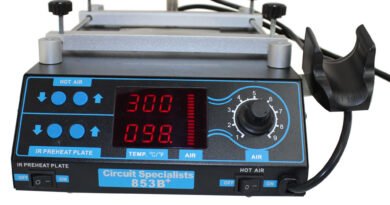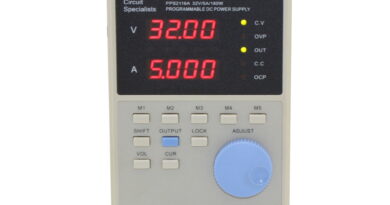Common Oscilloscope Applications
Oscilloscopes are used for a number of applications and in a number of different industries. Some examples of professionals who use oscilloscopes are automotive mechanics, medical researchers, television repair technicians, and physicists. Oscilloscopes are an absolutely integral tool for those designing, testing, or repairing electronic equipment.
Digital storage oscilloscopes have by and large replaced their analog counterparts and are now the most common kind of oscilloscopes because of their improved display, measurement, storage, and trigger features as well as their impressive specifications. Digital storage oscilloscopes come in handheld, portable units and bulkier, more powerful benchtop designs.
Let’s look at some common applications for oscilloscopes, the first of which is power analysis.
You can use an oscilloscope to measure and subsequently analyze the operating properties of circuits, line-power harmonics, and power conversion devices (such as autotransformers, linear regulators, and switched-mode power supplies). You will need differential amplifier probes for power analysis. You can find specialized software that makes analysis of data faster and simpler.
Because digital data signals are moving to increasing serial data formats, another common oscilloscope application is serial data analysis. You can use an oscilloscope to represent and analyze data formats like USB, Ethernet, Bluetooth, FireWire, and SCSI in addition to many others. Serial data analysis is also used by the automotive industry.
The third oscilloscope application is jitter analysis. Modern high-bandwidth circuits have incredibly fast clocks and signals. You can use an oscilloscope to represent, analyze, and debug signal jittter and timing for clocking applications (clocks, clock-to-data, and datastream analysis).
Another use for oscilloscopes is data storage device testing: you can test disk drive designs by assessing disk performance, media noise, and optical recording characteristics.
The last oscilloscope application we’ll address is time-domain reflectometry, or TDR, which is a means of measuring impedance values and variations — like faults — along cable connectors, microstrips on a circuit board, or transmission cables.

